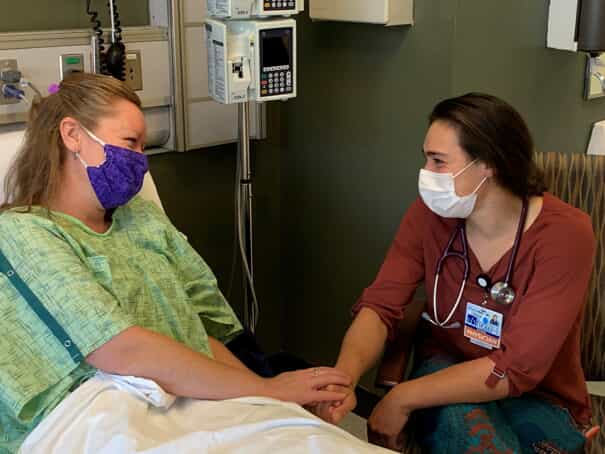Sepsis Hits Home
SLV Health
By Denise Valenti, MBA, RPA, RT, Quality & Safety Practitioner, and Helen Ross, Discharge Planner, Patient Family Services
Today we had the privilege to speak with a previous patient of San Luis Valley Health Regional Medical Center. He is a healthy 66-year-old male that rarely visits a primary care provider. Recently, he started to feel extremely tired and experienced all over body aches which lasted about three days and were getting worse. He was not sleeping well and had a lot of congestion, phlegm, cough, and difficulty breathing. The patient thought maybe he should call or go to the Respiratory Clinic to get tested for COVID-19. Due to coughing up blood, he decided to go straight to the emergency department. Once he arrived, he heard a diagnosis he was not very familiar with, “SEPSIS.”
When he arrived at the emergency department, the staff quickly picked up on the signs & symptoms he was presenting in the emergency department as sepsis. They quickly started interventions to treat and provide relief for this patient. He was eventually admitted into the hospital to continue treatment and to be observed by a hospitalist to ensure continued improvement so he could go home and start his recovery.

At San Luis Valley Health, we hear this story all too often. It is hard to know when to seek out treatment when you are feeling "just not right.” A common theme is a patient will try and fight what they feel is a “common cold” or something else they feel they can fight on their own. After a few days of struggling, they find that their symptoms worsen, and sometimes they end up in the emergency department and potentially admitted into the hospital with sepsis.
When you are not feeling well and the interventions you have tried are not working, we suggest that you call the SLVH Respiratory Clinic or make an appointment with your primary care provider within 24 hours. If you present with signs and symptoms of an infection, the provider will start antibiotics to help your body fight that infection. Unfortunately, sometimes oral antibiotics do not work, and you will need to be sent to the emergency room, and possibly admitted to the hospital, for further treatment and management.
According to Tiffanie Hoover, Nurse Practitioner, who is part of the hospitalist team at SLV Health, sepsis occurs when the body has an overwhelming immune response to a bacterial infection. Chemicals release into the blood to fight the infection and trigger widespread inflammation which can lead to tissue damage, organ failure, and death. Hoover points out that last year in the United States alone, sepsis took more lives than opioids, breast cancer, and prostate cancer combined and caused approximately 270,000 deaths. Signs of sepsis include shaking chills, fever, severe pain or discomfort, pale or mottled skin, confusion, lethargy, and shortness of breath. Get ahead of sepsis by recognizing early signs and symptoms of a worsening infection and seek immediate care. Sepsis is a medical emergency.
Amanda Mullen, MD, emphasized the signs and symptoms for awareness and education. She advises, “Some of the signs indicating that you might have an infection that could become sepsis are a fever over 100.4 F or low body temperature (below 96 F), chills, fast breathing, or racing heartbeat. If you experience these symptoms you should be seen by your primary care provider. If you experience these in addition to the symptoms Tiffanie Hoover mentioned previously, this could be a sign of a more serious infection and you should be seen in the Emergency Department. The most important thing patients, family members, and caregivers can do to prevent severe sepsis or septic shock is to recognize the signs of early infection and severe infection. It is never too early to be evaluated. If you are concerned that you or your loved one has an infection, do not hesitate to contact your primary care provider. If you are worried you have a severe infection, go to the Emergency Department.”